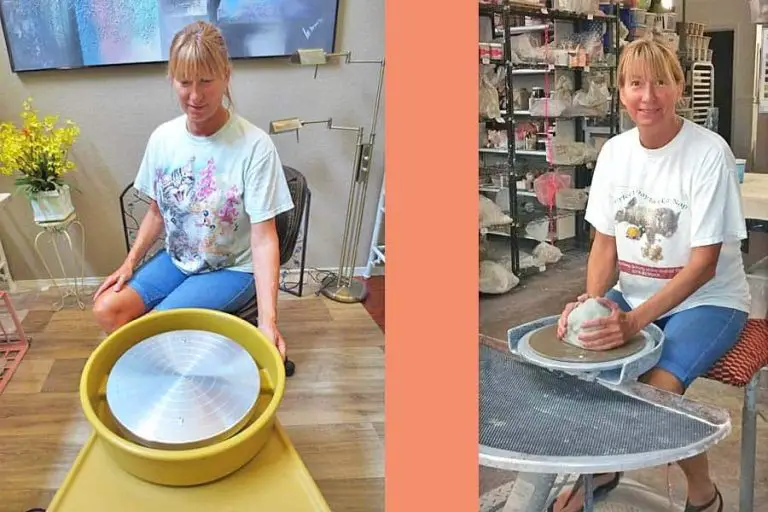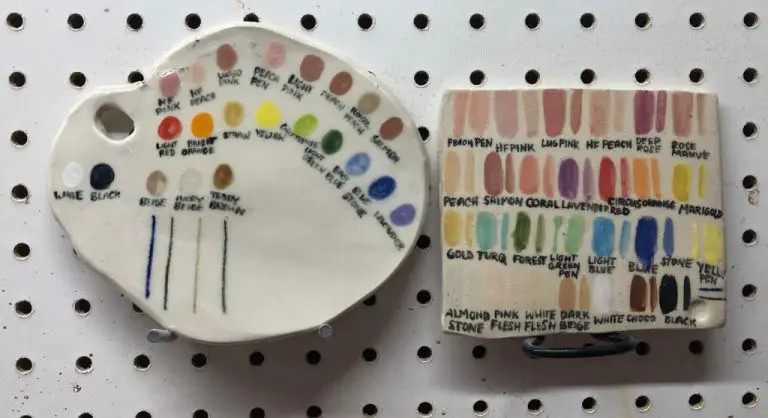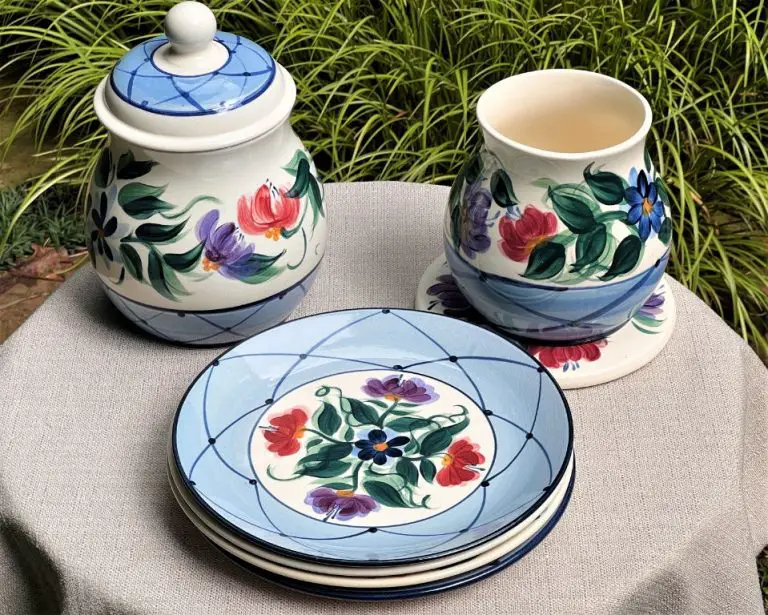How Can You Create A Hollow Round Form Using Pinch Pots?
Pinch pots are a type of hand-built pottery made using only your hands to shape the clay. Pinch pots are one of the most basic forms of pottery, as they require no tools beyond clay and your own fingers.
Creating a hollow round form is a simple but versatile project for both beginning and experienced potters. With the pinch pot technique, you can easily craft spherical or oval-shaped vessels in a variety of sizes. The process involves starting with a basic pinch pot base, then pinching and thinning the clay walls to expand the form upward and create a hollow interior space.
Pinch pots are an accessible way to get started working with clay and making three-dimensional rounded ceramics. In this guide, we’ll walk through the full process of using the pinch pot technique to create your own hollow round ceramic sculpture from start to finish.
Materials Needed
When making a hollow round form using pinch pots, you will need the following materials:
-
Clay – For best results, use a stoneware or porcelain clay that is plastic enough to pinch but firm enough to hold its shape without slumping. Avoid clays that are too soft or sticky.
-
Rolling pin – Useful for initially flattening out a ball of clay into a pancake shape to then pinch into a pot.
-
Ribs – These tools help smooth the inside and outside surfaces of the pinch pot as you shape it.
-
Needle tool – Helps open up the sealed pinch pot once the basic form is complete.
-
Fettling knife – Trims away excess clay and defines the foot of the pot.
-
Sponge – For smoothing fingerprints or rough areas, and controlling surface texture.
-
Plastic to cover unfinished work – Keeps clay moist and workable between sessions.
Having the right clay and tools will make pinching hollow forms much easier.
Preparing the Clay
One of the most important steps in creating hollow round forms with pinch pots is preparing the clay. Initially, the clay will be stiff and likely have some air pockets. It needs to be wedged or kneaded to make it soft and pliable enough to work with.
Start by cutting off a workable sized piece of clay, around 1-2 lbs. Knead the clay by pressing down and forward with the heels of your hands. Fold the clay over itself and continue kneading until all air pockets are worked out. The goal is to have a smooth, even ball of clay with no cracks or dry spots.
Wedging integrates water evenly throughout the clay. Kneading also elongates the clay particles so the clay becomes more plastic and flexible to work with. Well prepared clay will be able to hold its shape without cracking or slumping.
Take your time working the clay until it reaches an optimal consistency. The surface should be smooth, with no cracks or crevices. The clay should feel soft and pliable throughout, ready to be shaped into a hollow round form.
Creating the Base
Creating a solid base is an important step when making a pinch pot with a hollow form. After preparing the clay, start by firmly flattening out the bottom of the clay ball by pressing down. Try to get the bottom as flat and even as possible, without going too thin. You want a sturdy base that will support the rest of the pot.
Make sure to flatten out any creases or wrinkles by gently smoothing the surface with your fingers. You can set the flattened clay ball on a flat work surface and press down to help achieve an even, smooth bottom. The diameter of the base depends on the size of pot you want to end up with. A wider base provides more stability for taller forms.
Take your time flattening and evening out the base to ensure it provides a solid foundation for building up and hollowing out the rest of the pinch pot. Any irregularities in the base can lead to structural problems or make the pot prone to tipping over. Before moving on to the next steps, check the bottom and continue smoothing until you have a perfectly flat, stable base.
Opening the Top
Once you have created a solid clay base for your pinch pot, the next step is to open up the top. To do this, turn the pot over so the base is facing down. Then, using your thumb, push into the center of the clay at the top gently but firmly. You want to create an indentation, applying even pressure as you push your thumb down. Be careful not to push all the way through the clay.
Create an opening about 1-2 inches wide. The depth will depend on how tall you want the sides of your pinch pot to be. A deeper indentation will allow for taller sides. As you push your thumb in, support the outside of the pot with your other fingers to prevent cracking.
Opening up the top is a crucial step that sets up the rest of the pinch pot process. The indentation will give you the interior space to shape and expand the walls. Taking your time on this initial step will lead to better results as you pinching and shaping the clay.
Pinching the Sides
Once the base of the hollow form has been established, it’s time to begin pinching the sides. The key here is to use a vertical pinching motion with your fingers and thumbs. Pinch the clay walls upwards from the base, while rotating the form. Apply even pressure as you pinch to maintain uniform thickness of the walls.
Work methodically around the form, pinching the clay incrementally higher while thinning out the walls. The walls should be approximately 1/4″ thick. Pinching vertically creates a pleasing undulation and natural look. It also strengthens the form, as opposed to stretching the clay which can lead to thin, weak spots.
As you pinch higher, visually assess the thickness by holding the form up and shining a light through. Make sure to maintain even thickness throughout. Pay extra attention to the top third of the form, as this section tends to thin out.
Pinching takes practice, but with a steady rhythm you can create elegant vertical walls for your hollow form. Always step back and evaluate the overall shape as you progress. Keep the bottom heavier and walls thinner towards the top opening for proper balance and stability.
Shaping the Form
Once you have pinched and lifted the sides of the pinch pot, it’s time to start shaping the overall form into a smooth, rounded shape. The key things to focus on during the shaping stage are:
Making Round vs Oval Shapes
As you pinch and shape the clay, pay attention to whether you are creating a true round shape versus elongating the form into more of an oval. Gently pinch and push any flattened or oval areas to make the circumference even all the way around.
Smoothing Ripples and Ridges
As you pinch the clay, small ripples and ridges can form on the surface. Use your fingers and some water to gently smooth these out. Apply light pressure in small circles to blend the clay. Be careful not to overwork the clay or make the walls too thin.
Take your time during the shaping process to create a smoothly rounded form. The more care you take at this stage, the nicer the final result will be after firing.
Refinement
Once you have formed the basic shape of your hollow round pinch pot, the next step is to refine and smooth the surfaces. This process will give your finished piece a polished, professional look. Here are some techniques to use during the refinement stage:
Use flexible metal ribs to compress and smooth the clay. Run the ribs gently over the surface at different angles to blend and even out the form. Ribs help remove fingerprints and irregularities. Use broad, sweeping movements and be careful not to dig the ribs into the soft clay.
Next, switch to foam or rubber ribs for a final smoothing. These softer tools will polish the surface without removing too much clay. Take care on thinner walled sections.
Use wooden modeling tools to refine details and accentuate designs. Loop tools and rounded pieces are great for accessing tight areas.
Consider a sgraffito design. Use a pointed tool to scratch through the surface to create markings and patterns.
Moisten fingers and hands to blend and compress clay for an organic, hand-shaped look. Water helps blend surface cracks and lines.
Visually check all surfaces and angles to ensure even thicknesses and a symmetrical form. Make any necessary adjustments.
Refinement transforms a rough pinch pot into a flawless finished piece. Taking time on this important step will enhance the quality and artistry of your final fired hollow form.
Drying Process
Properly drying pinch pots is an important step to ensure they keep their shape and don’t crack. Here are some tips for careful drying:
Let pots dry slowly at room temperature. Avoid putting them in direct sunlight or near heating vents which can cause uneven drying. Slow drying over 1-2 weeks reduces cracking.
Wrap pots in plastic wrap or place in large plastic bags with a few holes poked in it. This retains moisture and slows the drying process.
Support structures like wadded up plastic bags or soft sponges can be placed inside pots while drying to help hold their shape.
Turn pots periodically while drying so moisture evaporates evenly. Rotate and flip them over each day.
Keep the clay thickness even throughout the pot, usually 1/4″ or less. Uneven thickness can lead to cracking.
Add decorative elements like handles or feet after the pot has dried and before firing. These can crack off if added too soon.
Avoid drastic temperature changes like refrigeration that can shock the clay. Cool, consistent drying is key.
With proper slow drying, pinch pots should hold their shape and be ready for firing and finishing.
Firing and Finishing
Once your hollow pinch pot has dried completely, it’s ready to be fired in a kiln. Firing helps harden and strengthen the clay through a process called sintering. For a bisque firing, aim for a temperature between 1000-1100°F. Slowly raise the temperature at a rate of approximately 200°F per hour. Let the kiln cool fully before removing your piece.
After bisque firing, you can leave your pinch pot unglazed for a natural terra cotta look. Or glaze it before a final glaze firing to add color and make it non-porous. Brushing, dipping, and pouring are common glaze application techniques. Select a cone 6 glaze formulated for earthenware clay. Apply 2-3 thin, even coats. Once the glaze dries, do a final firing to around 1800-1900°F. The glaze will melt and fuse to the clay surface, resulting in a glossy decorative finish.



